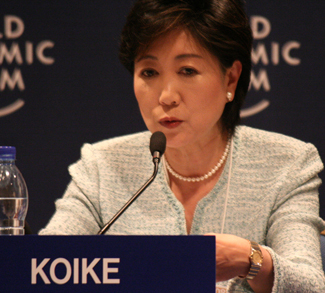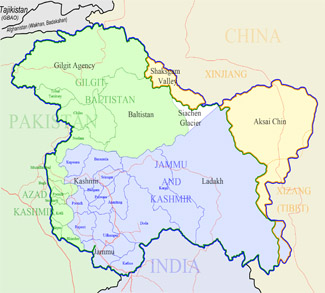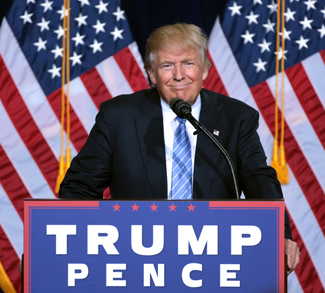As Japan heads into another election cycle, spurred on and propelled by Prime Minister Shinzo Abe, it seems that the country’s popular nationalistic leader might be facing a tougher challenge than many initially thought. But in order to understand the woman who could beat him, we’ve first got to understand the Japan that is giving her the chance.
Japanese politics resembles Western democracy only in its governmental structure, as it lacks the fertile grounds for the traditional strangleholds most major parties in Europe and North America have. Although many claim that the reason for this is mainly cultural, it is worth pointing out the clear differences in the major economic and security issues facing each region.
Side-by-side, you’d be hard pressed to find actual policy differences between the two economic conservatives of Abe and Koike.
While Europe and North America struggle to fight off Russian influence in their domestic affairs, democratic nations of Asia such as Taiwan, South Korea, Thailand, and Japan have all had to fight this kind of battle for almost a hundred years, stretching back even before the Cold War. While American citizens remain horrified even at the possibility of the DPRK casting its deadly radioactive fingers across the Pacific, South Korea and Japan have not only accepted this but have been figuring out ways to deal with the problem for almost 30 years. For the North America, physical conflict at its borders is a nightmare. For the free nations of Asia, it’s a reality.
It’s important to remember this because it’s the prime reason why smaller parties and upstart political factions, though they have not been known to win in the past, occasionally excel at it. During the 1990s as Japan began a new era of struggle against the North Korean threat and faced the crash of the housing bubble, Tsutomu Hata, a former member of Shinzo Abe’s Liberal Democratic Party, left to establish his own political group called the Japan Renewal Party. He went on to serve as his country’s prime minister under that banner.
When faced with extreme problems, people are willing to listen to new ideas. It’s this constant stream of crises and dilemmas that has nourished the resolve of democratic values in Japan, not diminished them. In Japan, history is on the side of upstarts like Yuriko Koike, and she’s going to need all the help she can get.
Just like Tsutomu Hata, Yuriko Koike has a past in the LDP and also like her counterpart, she left it for political reasons – but not before giving the LDP a nasty going away present.
In September of 2016, Koike gave her former allies in the LDP a horse whipping in Tokyo’s governorship contest, when she hammered out a victory against both her own party’s nominee and that of their main rival. “I would like to implement new policies that no one has ever seen,” the ecstatic underdog proclaimed after her historic victory, becoming Tokyo’s first female governor. Koike won 2,912,628 votes, with her LDP colleague away with only 1,793,453. But that wasn’t exactly where her political career began.
Long before her Tokyo victory, Koike served in cabinet positions and in the National Diet’s House of Representatives. She’s held the position of both Minister for the Environment and, briefly, as Defense Minister under Abe back in 2007. Her role in national politics has been substantial for many years now, even being dubbed by the Japan Times as “Japan’s Condi Rice.”
Koike is facing Abe with her new political party, the ‘Party of Hope,’ and has a good chance of taking precious votes from the LDP in the massive metropolitan giant of Tokyo, where she remains relatively popular. Side-by-side however, surprisingly, you’d be hard pressed to find actual policy differences between the two economic conservatives. In fact, the only real divergences are on the biggest issues: North Korea and the unpopular consumption tax which Abe has proposed raising.
While Koike and her party have found an electoral sweet spot in standing against the tax increase, Abe remains on top when it comes to national security, with his tough stance on North Korea garnering him support from the public.
Whatever the outcome, it’s important to remember that even if Koike makes a significant dent in Abe’s LDP majority or even beats it outright, it’s highly unlikely she will become prime minister, as she has chosen not to directly run for the House of Representatives herself, opting to remain as Tokyo’s governor to finish her first term. But ‘victory’ isn’t necessary defined as beating Abe electorally. For a party like Koike’s, so close in ideology and policy to Abe and the LDP, gaining support in the House could force the Liberal Democrats to make them their junior coalition partner, giving them a voice in policy and domestic matters and possibly forcing the government further to the right economically.
As of now, a recent FNN & Sankei Shimbun poll has placed the Party of Hope firmly in second place, despite still remaining almost 15 points behind the LDP. Whatever the outcome, many have continued to predict that Koike is the best chance for a female prime minister in Japan in a lifetime, even if it doesn’t happen this time around.
The opinions, beliefs, and viewpoints expressed by the authors are theirs alone and don’t reflect any official position of Geopoliticalmonitor.com.




